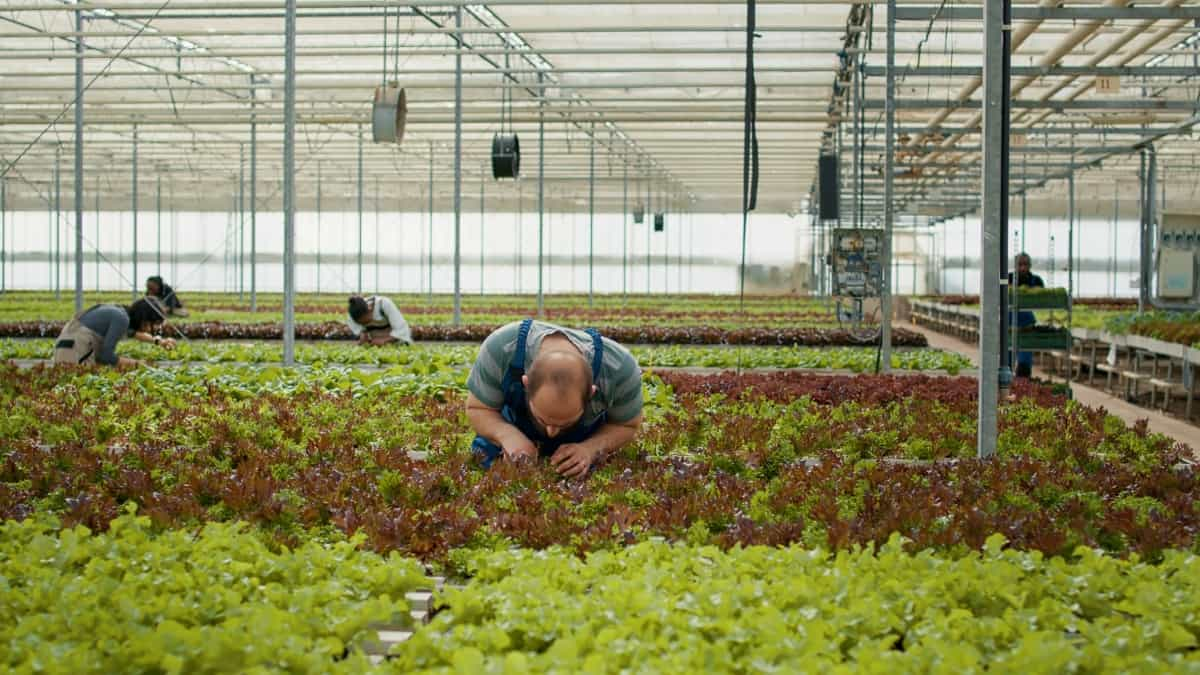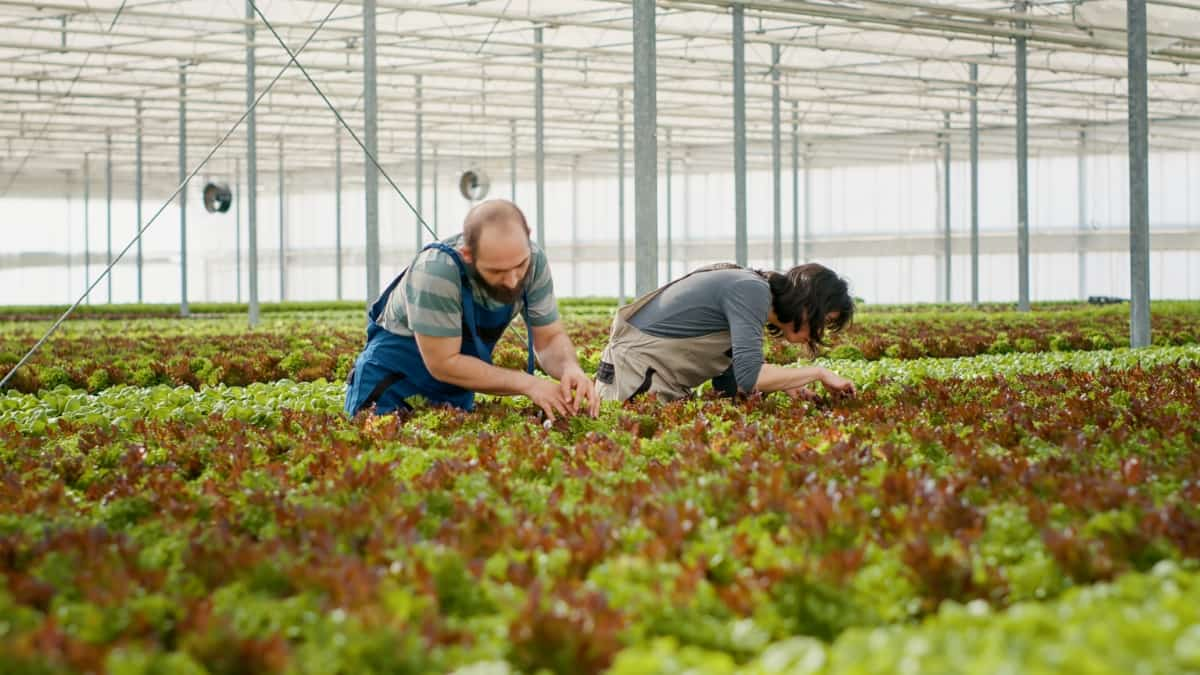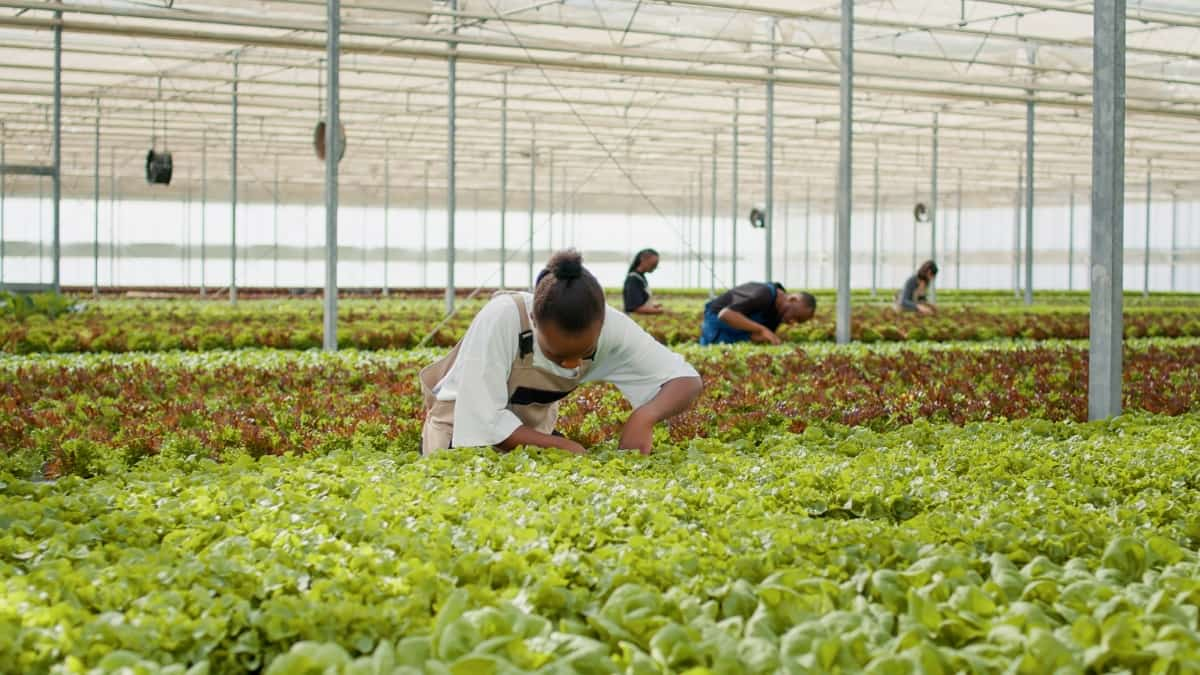Hydroponic gardening is an incredible way to grow plants without soil, allowing maximum control over nutrients and environmental conditions. Hydroponic pests can cause a range of problems for your plants. Some feed on the plant’s leaves, stems, or roots, causing visible damage and stunting growth.

Common Hydroponic Pests
Identifying and Managing Aphids in Hydroponic Systems: Organic and Natural Approaches
Aphids are those pesky little insects that can wreak havoc on your hydroponic garden. They may be small, but their voracious appetite and ability to reproduce quickly. The main sign of an aphid infestation in hydroponics is the sticky residue they leave behind called honeydew. This sticky substance can attract other pests, like ants.
The effective method is introducing beneficial insects such as ladybugs or lacewings into your hydroponic system. These natural predators feast on aphids and can help keep their population under control. Cultural practices also play a role in managing aphid populations naturally in hydroponics. Regularly inspecting your plants and promptly removing affected leaves or stems can prevent these pests’ spread.
Controlling Spider Mites in Hydroponics: Effective Organic and Natural Solutions
Spider mites can wreak havoc on your hydroponic system, causing damage to your plants and stunting their growth. The main method for controlling spider mites in hydroponics is predatory insects such as ladybugs or lacewings. These beneficial bugs feed on spider mites, keeping their population under control.
You can purchase these insects online or from garden centers and release them into your hydroponic system. Regularly inspecting your plants is crucial for early detection of spider mite infestations. If you notice any signs of webbing or yellowing leaves, take immediate action to prevent further spread.
Preventing Fungus Gnats in Hydroponic Environments: Organic and Natural Prevention Strategies
Fungus gnats can be a nuisance in hydroponic systems, but there are organic and natural prevention strategies that can help keep these pesky insects at bay. Maintaining proper hygiene is crucial. Cleanliness is key to preventing fungus gnat infestations.
In case you missed it: How to Grow Hydroponic Cucumber: A Step-by-Step Guide

Regularly clean your hydroponic system, including all equipment and surfaces, to remove any potential breeding grounds for the gnats. Maintaining proper moisture levels in your hydroponic system can also help deter fungus gnats. These pests thrive in moist environments, so do not overwater your plants and provide adequate drainage.
Managing Whiteflies in Hydroponic Systems: Organic and Natural Control Methods
These insects can quickly multiply and cause damage to your plants if left unchecked. The natural way to control whiteflies is to introduce beneficial insects into your garden. These predators feed on whitefly larvae and adults, helping to reduce their population naturally. You can purchase these beneficial insects from gardening supply stores or online.
Another organic approach is using insecticidal soaps or oils made from natural ingredients such as neem oil or garlic oil. Remember to follow the instructions when applying these treatments. Sticky traps around your hydroponic system can also help catch adult whiteflies in flight. The bright yellow color of the traps attracts them, making it easier for you to monitor their presence and take appropriate action. Regularly inspecting your plants for signs of an infestation is crucial in managing whiteflies effectively.
Dealing with Thrips Infestations in Hydroponics: Organic and Natural Remedies
Thrips can be a nuisance when they infest your hydroponic system. Introducing beneficial insects into your hydroponic garden is an effective method for controlling thrips in hydroponics. Predatory mites feed on thrips larvae and adults, keeping their population in check.
Another option is using sticky traps to catch adult thrips. These traps are coated with a substance that attracts the insects, causing them to get stuck upon contact. Regularly monitoring and replacing these traps will help reduce the thrip population over time. Regularly clean your equipment, promptly remove any dead or decaying plant matter, and ensure proper airflow to discourage pests from settling in.
Organic Approaches to Combatting Root Aphids in Hydroponics: Prevention and Treatment
Root aphids can be a common pest in hydroponic systems, causing damage to the roots of plants and hindering their overall growth. However, there are organic approaches you can take to combat these pesky insects. Prevention is key to controlling root aphids in hydroponics. One effective method is maintaining proper sanitation practices in your hydroponic system. Regularly clean and disinfect your equipment to minimize the risk of infestation.
Introduce beneficial insects into your hydroponic setup. These natural predators feed on root aphids and help keep their population under control. You can also try incorporating biological controls such as nematodes or predatory mites into your hydroponic system. These organisms actively hunt down and consume root aphids, providing long-term plant protection.
Natural Control Methods for Mealybugs in Hydroponic Environments: Prevention and Management
Mealybugs are a common pest that can wreak havoc on your hydroponic system if left unchecked. These tiny insects may be small, but they can cause damage to hydroponic plants by sucking nutrients from the leaves and stems. Ladybugs, lacewings, and parasitic wasps are all-natural predators of mealybugs.
Introducing these beneficial insects into your hydroponic environment allows you to create a natural balance that keeps mealybug populations in check. If you notice signs of mealybug infestation on one or more plants, promptly remove them from your hydroponic system. This will help prevent the mealybugs from other healthy plants.
Preventing and Treating Scale Insects in Hydroponics: Organic and Natural Solutions
These tiny pests can quickly infest your plants, sucking the sap from their plant leaves and stems. However, with the right approach, you can keep them at bay. The effective method is introducing beneficial insects like ladybugs or lacewings into your hydroponic system. These predators will feast on scale insects, helping to control their population naturally.
In case you missed it: Essential Hydroponic Farming Equipment for Starting Plants in Hydroponics

You can purchase these helpful bugs from garden supply stores or order them online. Maintaining proper hygiene in your hydroponic system is crucial for preventing scale insect infestations. Clean all equipment thoroughly before use and regularly remove any dead plant matter or debris that could attract these pests.
Managing Caterpillar Infestations in Hydroponic Gardens: Organic and Natural Approaches
Check your hydroponic plants regularly for any signs of caterpillars or their eggs. Gently pick them off the leaves by hand or use a soft brush to dislodge them. This method may require patience and persistence, but it’s a safe way to control the infestation. Another method is introducing beneficial insects like ladybugs or lacewings into your garden. These natural predators feed on caterpillars, helping keep their population in check. You can purchase these beneficial insects online or from local gardening stores.
Controlling Leaf Miners in Hydroponics: Organic and Natural Remedies
The effective approach is introducing beneficial insects like parasitic wasps or ladybugs into your hydroponic garden. These predatory insects feed on leaf miners and their larvae, helping to control the population naturally. Additionally, regularly inspecting your plants for signs of infestation is crucial for early detection and prevention. If you spot any telltale tunnels or discolored leaves caused by leaf miners, remove those affected parts immediately to prevent further spread. Maintaining a healthy growing environment is key to avoiding leaf-miner infestations.
Frequently Asked Questions about Common Hydroponic Pests
What are the Most Common Hydroponic Pests?
Several pesky critters can wreak havoc on your hydroponic plants, from aphids to spider mites. These include whiteflies, thrips, fungus gnats, scale insects, and mealybugs.
Can I Use Organic Pesticides in My Hydroponic System?
Yes. There are several organic options available that are safe to use in hydroponics. Neem oil, for example, is a popular choice as it acts as an insecticide and a fungicide.
How Often Should I Inspect My Plants for Pests?
Regular inspections are crucial in identifying potential pest problems early on. It’s recommended to check your plants at least once a week, paying close attention to the undersides of leaves where pests like aphids and spider mites tend to hide.
Can I Prevent Pest Infestations in My Hydroponic System?
Prevention is key to controlling pest problems in hydroponics. Implement proper hygiene practices by sterilizing equipment before use and regularly cleaning your system to remove debris that may harbor pests.
What is the Best Pest Control for Hydroponics?
Companion planting helps keep pests away from hydroponic systems. Planting marigolds or basil alongside your main crops is a natural deterrent for many common garden pests.
In case you missed it: How to Choose the Right Plants for Vertical Hydroponics

Conclusion
Identifying hydroponic pests is crucial for effective control and prevention strategies. Common hydroponic pests include aphids, spider mites, fungus gnats, whiteflies, thrips, root aphids, mealybugs, scale insects, caterpillars, and leaf miners – each with unique characteristics and behaviors. Taking proactive measures to control hydroponic pest populations is essential for maintaining healthy plant growth in your system.
- Feed Your Flock for Less: Top 10 Tips to Save on Chicken Feed
- Ultimate Guide to Ossabaw Island Hog: Breeding, Raising, Diet, and Care
- Hatching Answers: The Top 10 Reasons Your Chickens Aren’t Laying Eggs
- Eggs and Economics: Breaking Down the Cost of Raising Backyard Chickens
- Defend Your Greens: Proven Methods to Keep Iguanas Out of Your Garden
- Ultimate Guide to Cinnamon Queen Chicken: A Comprehensive Guide for Beginners
- Ultimate Guide to California Tan Chicken: Breeding, Raising, Diet, Egg-Production and Care
- Ultimate Guide to Marsh Daisy Chicken: Breeding, Raising, Diet, and Care
- 10 Types of Chicken Farming Businesses You Can Start for Profits